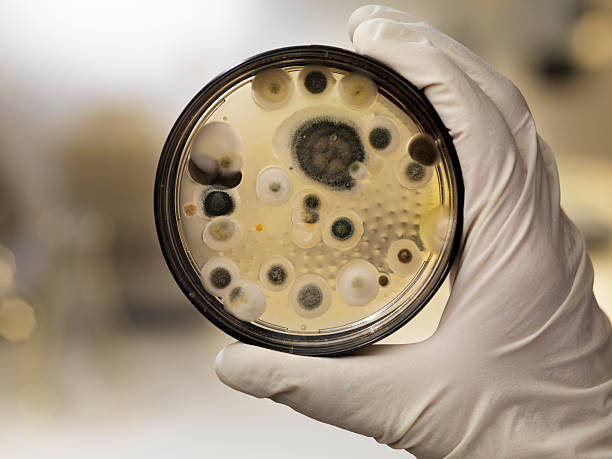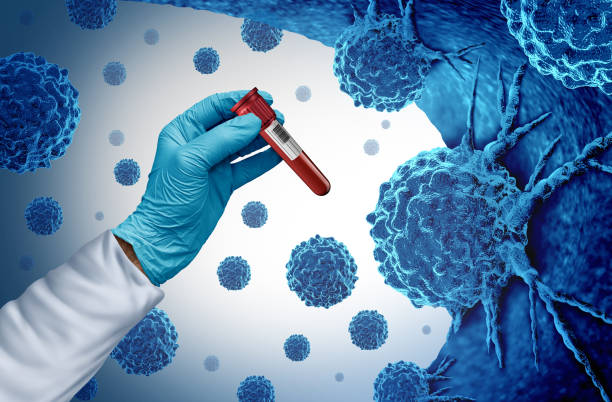By Morgan Nwanguma
Pharaoh’s Curse fungus changed to combat cancer.
In an unexpected breakthrough, researchers have turned a once-feared fungus into a promising cancer-fighting ally. Aspergillus flavus, a toxic crop fungus historically linked to deadly spores found in ancient tombs like King Tut’s, has now yielded a powerful new class of molecules called asperigimycins.
Led by scientists at the University of Pennsylvania and collaborating institutions, the team bioengineered these rare fungal RiPPs to enhance their potency. The modified compounds showed strong, targeted effects against leukemia cells—disrupting cancer cell division with a precision that rivals existing FDA-approved treatments and paving the way for a new wave of fungal-based therapeutics.
“Fungi gave us penicillin,” says Sherry Gao, Presidential Penn Compact Associate Professor in Chemical and Biomolecular Engineering (CBE) and in Bioengineering (BE) and senior author of a new paper in Nature Chemical Biologyon the findings. “These results show that many more medicines derived from natural products remain to be found.”
From Curse to Cure
Aspergillus flavus, named for its yellow-hued spores, has long held a notorious reputation. When archaeologists opened King Tutankhamun’s tomb in the 1920s, a string of sudden deaths among the team sparked rumors of a pharaoh’s curse. Years later, experts suggested that ancient, dormant fungal spores might have been the real culprit.
A similar mystery unfolded in the 1970s, when 12 scientists entered the tomb of Casimir IV in Poland—only for 10 to die within weeks. Investigations later identified A. flavus in the tomb, a fungus capable of producing toxins that cause severe lung infections, particularly in people with weakened immune systems.
Today, in a remarkable scientific reversal, that very fungus is emerging as a surprising source of a potential breakthrough cancer therapy.
An unusual Fungal discovery
The therapy in development belongs to a rare group of compounds known as RiPPs—ribosomally synthesized and post-translationally modified peptides—pronounced like “rip” in torn fabric. The name reflects how these molecules are made: first assembled by the ribosome, the cell’s protein-making machinery, and then chemically altered to boost their cancer-fighting abilities.
“Purifying these chemicals is difficult,” explains Qiuyue Nie, a postdoctoral fellow in Chemical and Biomolecular Engineering (CBE) and the study’s lead author. While thousands of RiPPs have been identified in bacteria, only a few have been discovered in fungi. That’s partly because earlier researchers often misclassified fungal RiPPs as non-ribosomal peptides, with limited insight into how fungi actually produce them.
“The synthesis of these compounds is complicated,” adds Nie. “But that’s also what gives them this remarkable bioactivity.”
Hunting for Chemicals
To uncover more fungal RiPPs, the researchers began by examining a dozen strains of Aspergillus, a genus previously suspected to harbor these rare compounds. By comparing the chemicals produced by each strain with known RiPP building blocks, they singled out A. flavus as a promising candidate for deeper investigation.
Genetic analysis revealed a specific protein in A. flavus likely responsible for producing fungal RiPPs. When the team deactivated the genes associated with that protein, the chemical signatures of RiPPs vanished—strongly linking the protein to their production.
This innovative strategy—integrating both metabolic and genetic data—not only identified the source of fungal RiPPs in A. flavus, but also opens a new path for discovering similar compounds in other fungi.
A powerful New drug
After purifying four distinct RiPPs, the researchers discovered that each molecule featured a unique structure of interlocking rings. They named these previously uncharacterized compounds asperigimycins, in honor of the fungus from which they were derived.
Even without modification, two of the four asperigimycin variants showed strong activity against leukemia cells when tested on human cancer samples. One variant, enhanced by adding a lipid molecule—similar to one found in royal jelly that feeds developing bees—performed on par with cytarabine and daunorubicin, two long-standing FDA-approved chemotherapy drugs used to treat leukemia.
Cracking the Code of Cell Entry
To investigate why lipids boosted the potency of asperigimycins, the researchers selectively activated and silenced specific genes in leukemia cells. One gene, SLC46A3, emerged as essential for enabling the compounds to enter the cells in effective amounts.
SLC46A3 plays a key role in transporting materials out of lysosomes—small cellular compartments that break down and process foreign substances that enter human cells. “This gene acts like a gateway,” says Nie. “It doesn’t just help asperigimycins get into cells, it may also enable other ‘cyclic peptides’ to do the same.”
Like asperigimycins, many of these compounds possess medicinal potential—nearly two dozen cyclic peptides have been approved for clinical use since 2000 to treat conditions ranging from cancer to lupus. However, most require chemical modifications to effectively enter cells in therapeutic amounts.
“Knowing that lipids can affect how this gene transports chemicals into cells gives us another tool for drug development,” says Nie.
Disordering Cell Division
By means of more testing, the scientists established that asperigimycins probably disrupt the course of cell division. “Cancer cells divide uncontrollably,” says Gao. “These compounds block the formation of microtubules, which are essential for cell division.”
Importantly, the compounds showed little to no impact on breast, liver, or lung cancer cells—or on various bacteria and fungi—indicating that asperigimycins specifically target certain cell types. This selectivity is a vital characteristic for the development of safe and effective drugs.
Future Directions
Beyond revealing the therapeutic promise of asperigimycins, the researchers also identified similar gene clusters in other fungal species, hinting at the existence of many more undiscovered fungal RiPPs with potential medical applications. “Even though only a few have been found, almost all of them have strong bioactivity,” says Nie. “This is an unexplored region with tremendous potential.”
The next stage is to examine asperigimycins in animal models, hoping that one day it will be human clinical trials. “Nature has given us this incredible pharmacy,” says Gao. “It’s up to us to uncover its secrets. As engineers, we’re excited to keep exploring, learning from nature and using that knowledge to design better solutions.”
This research project was carried out at the University of Pennsylvania School of Engineering and Applied Science; Rice University; the University of Pittsburgh; The University of Texas MD Anderson Cancer Center; Washington University School of Medicine, St. Louis; Baylor College of Medicine and the University of Porto.
The research was backed by the U.S. National Institutes of Health (R35GM138207, R35CA274235, R35GM128779), the University of Pennsylvania, the Welch Foundation (C-2033-20200401), the Houston Area Molecular Biophysics Program (NIH Grant T32 GM008280), the Cancer Prevention and Research Institute of Texas (RR220087, RR210029) and the National Science Foundation (OAC-2117681, OAC-1928147, OAC-1928224).
Other co-authors were: Fanglong Zhao, Xuerong Yu, Caleb Chang, Rory Sharkey, Bryce Kille, Hongzi Zheng, Kevin Yang, Alan Du, Todd Treangen, Yang Gao and Hans Renata of Rice University; Chunxiao Sun and Shuai Liu of Penn Engineering and Rice; Siting Li and Junjie Chen of MD Anderson; Mithun C. Madhusudhanan and Peng Liu of Pitt; Sandipan Roy Chowdhury, Dongyin Guan, Jin Wang, Xin Yu and Dishu Zhou of Baylor; Maria Zotova and Zichen Hu of Penn Engineering; Sandra A. Figueiredo and Pedro N. Leão of the University of Porto; and Andy Xu and Rui Tang of Wash U, St. Louis.





